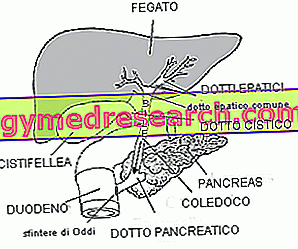Related articles: Pulmonary fibrosis
Definition
Pulmonary fibrosis is a chronic disease characterized by the progressive scarring of the tissue that covers the lungs (lung parenchyma). This process seems to derive from an abnormal inflammatory response to a series of damage to the lung parenchyma.
The formation of scar tissue in the lungs compromises the exchange of gases (oxygen and carbon dioxide) at the level of the alveoli and leads to breathing difficulties.
Fibrosis can be associated with interstitial lung diseases linked to autoimmune diseases (eg systemic sclerosis, dermatomyositis and rheumatoid arthritis) or infectious (eg tuberculosis). In other cases, it is induced by certain therapeutic regimens (eg amiodarone, chemotherapy drugs and radiotherapy) or by exposure to dust or toxic substances in the workplace (silica, asbestos, heavy metals and wood sawdust). Risk factors that favor its appearance are the habit of cigarette smoking, respiratory tract infections, gastro-esophageal reflux disease and genetic predisposition in familial forms (10-15% of cases).
Pulmonary fibrosis usually occurs in adulthood, especially in male subjects.
Most common symptoms and signs *
- Respiratory acidosis
- Anorexia
- Asthenia
- Pulmonary atelectasis
- Cyanosis
- Dyspnoea
- Drumstick fingers
- Chest pain
- Edema
- hemothorax
- Shortness of breath
- Hypertrophy of the accessory muscles of respiration
- Hypoxia
- Weight loss
- pneumothorax
- rales
- Wheezing breath
- Reduction of respiratory noise
- Water retention
- Drowsiness
- Cough
Further indications
Common symptoms of pulmonary fibrosis are: shortness of breath (dyspnea that tends to worsen over time), dry cough, chest discomfort, loss of appetite, weight reduction, weakness and easy fatigability.
Pulmonary fibrosis has repercussions on circulation and heart and can lead to respiratory failure. Other possible complications are pulmonary hypertension, right heart failure (pulmonary heart) and the increased risk of lung cancer.
The diagnostic procedure to confirm the presence of pulmonary fibrosis begins with the clinical evaluation of the patient, chest radiography and high-resolution CT scan of the lung. Furthermore, in order to determine the degree of functional limitation that determines the disease, it is possible to resort to exercise tests, blood gas analysis (measuring the amount of oxygen and carbon dioxide in arterial blood) and pulmonary function tests (spirometry). In doubtful cases, a biopsy is required.
There are no specific therapies for pulmonary fibrosis, but a series of treatments can slow down the progression and improve the patient's quality of life. Measures that can be taken include: oxygen therapy, pulmonary rehabilitation programs, cortisone drugs and immunosuppressants. In younger patients, without other associated diseases, lung transplantation may be indicated.



